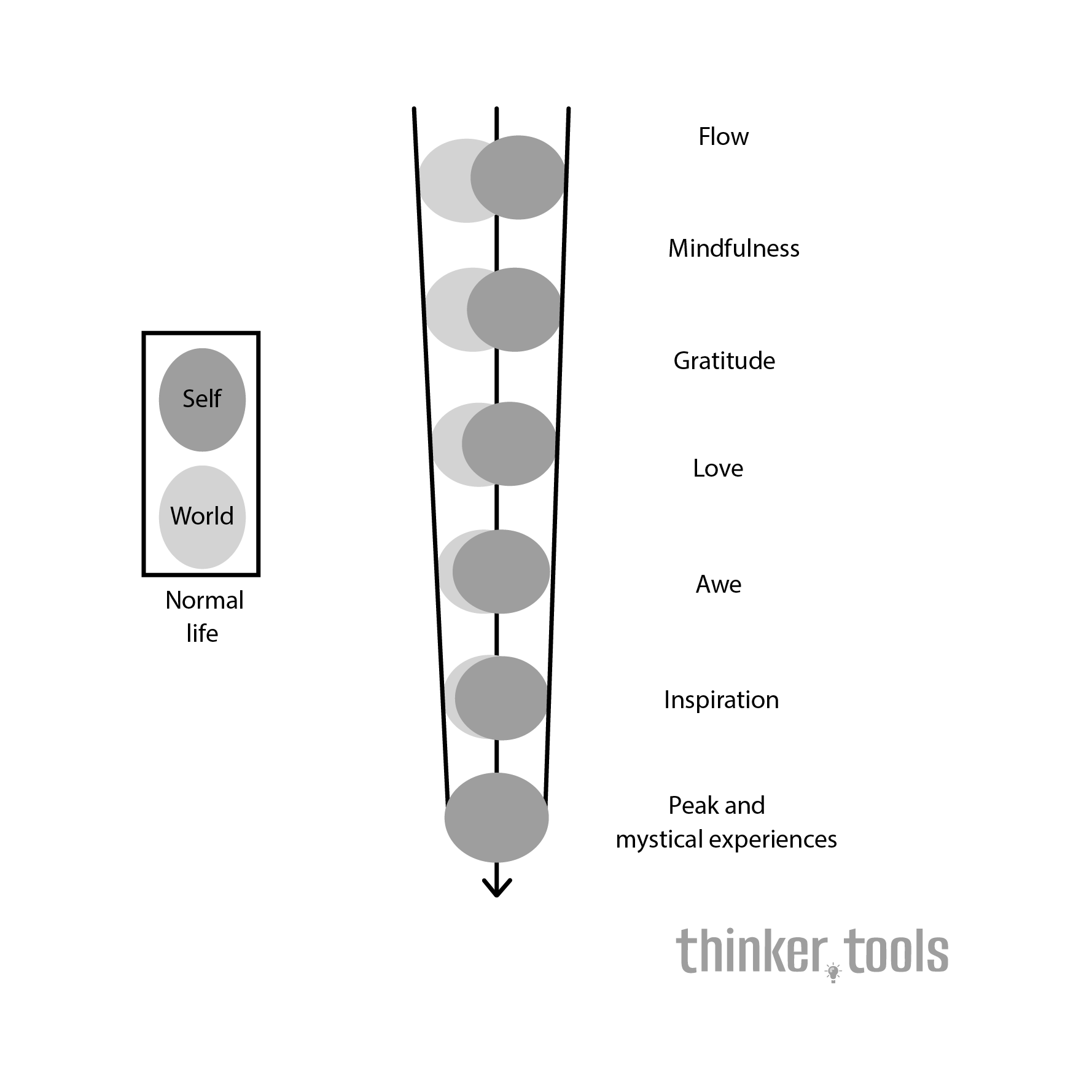
What is Ego Death?
Ego Death is a psychological and spiritual framework that involves the temporary dissolution or transcendence of one's ego – the constructed sense of self that includes our identity, beliefs, preferences, and the constant narrative of "I, me, mine." It's not about destroying the ego permanently (which would be neither possible nor desirable) but rather about learning to step outside its limitations when beneficial.
This framework allows us to observe our thoughts, emotions, and behaviors from a more objective standpoint, free from the defensive mechanisms and biases that usually color our perception. It's like stepping out of a movie you're acting in to see the entire production from the director's chair.
The History and Origin
The concept of ego death has ancient roots in various spiritual traditions. Buddhism speaks of "anatta" or non-self, Hinduism describes the dissolution of the individual self into universal consciousness, and Sufi mysticism explores "fana" or annihilation of the ego.
In Western psychology, Carl Jung wrote extensively about the need to transcend the ego for individuation. The term "ego death" gained prominence in the 1960s through the work of Timothy Leary and other researchers studying consciousness expansion. Today, it's studied in the context of meditation, psychedelic therapy, and transformative psychology.
How to Use the Ego Death Framework
Step 1: Create a Safe Container
Before attempting any ego dissolution practice, ensure you're in a safe, comfortable environment where you won't be disturbed. This could be a quiet room, nature setting, or meditation space.
Step 2: Start with Observation
Begin by simply observing your thoughts without identifying with them. Notice thoughts arising and passing like clouds in the sky, recognizing that you are the sky, not the clouds.
Step 3: Question Your Identities
Gently inquire:
- Who am I beyond my name?
- Who am I beyond my roles (parent, professional, etc.)?
- Who am I beyond my beliefs and opinions?
- Who am I beyond my memories and experiences?
Step 4: Practice Dis-identification
Use phrases like:
- "I have thoughts, but I am not my thoughts"
- "I have emotions, but I am not my emotions"
- "I have a body, but I am not my body"
- "I have a story, but I am not my story"
Step 5: Embrace the Void
As identifications fall away, you may experience a sense of emptiness or void. Instead of filling it immediately with new identities, rest in this spaciousness. This is where insight and transformation occur.
Step 6: Gentle Return
Slowly reintegrate your sense of self, but with a lighter grip. Recognize your identities as useful tools rather than absolute truths.
Practical Examples
Meditation Practice: During daily meditation, Mark practices observing his thoughts without attachment. Over time, he experiences moments where his usual sense of self dissolves, leaving only pure awareness. These experiences help him respond to work stress with greater equanimity.
Creative Breakthrough: An artist facing creative block uses ego death practices to dissolve her attachment to being a "good artist." In the space beyond this identity, fresh inspiration flows, leading to her most innovative work.
Conflict Resolution: During a heated argument with his partner, James remembers to step back from his ego's need to be right. This moment of ego dissolution allows him to see his partner's perspective clearly, transforming conflict into connection.
Leadership Development: A CEO practices ego death to transcend her attachment to control and status. This allows her to listen deeply to employees, admit mistakes, and make decisions from wisdom rather than ego-protection.
Benefits and Life Impact
The Ego Death framework can profoundly transform your life:
Enhanced Creativity: By dissolving rigid self-concepts, you access a flow state where innovative ideas emerge naturally, unfiltered by ego's judgments.
Deeper Relationships: Transcending ego allows for genuine empathy and connection, as you're no longer defending an image but meeting others authentically.
Reduced Suffering: Much psychological suffering comes from ego's constant comparisons, judgments, and need for validation. Ego death practices offer relief from these mental patterns.
Increased Wisdom: Beyond ego's limited perspective lies access to intuitive wisdom and insights that the defensive ego typically blocks.
Greater Resilience: When you know you're more than any identity or experience, you become less shakeable by life's changes and challenges.
Spiritual Growth: Many report profound spiritual experiences and a sense of connection to something greater than their individual self.
Improved Decision-Making: Decisions made from beyond ego tend to serve not just personal interests but the greater good.
Freedom from Social Conditioning: Ego death helps you recognize and transcend limiting beliefs absorbed from society, family, and culture.
Enhanced Presence: Without ego's constant commentary, you can fully experience the present moment in its richness.
The Ego Death framework is not about becoming passive or losing your unique personality. Rather, it's about gaining the flexibility to transcend your ego when it limits you, while still being able to use it skillfully when needed. Like a skilled actor who can step in and out of character, you learn to wear your identity lightly, using it as a tool rather than being trapped by it. This freedom opens doors to experiences, insights, and connections that the ego's protective walls typically keep out. In a world where ego-driven behavior creates much suffering, learning to transcend the ego even temporarily is both a personal liberation and a gift to everyone around you.